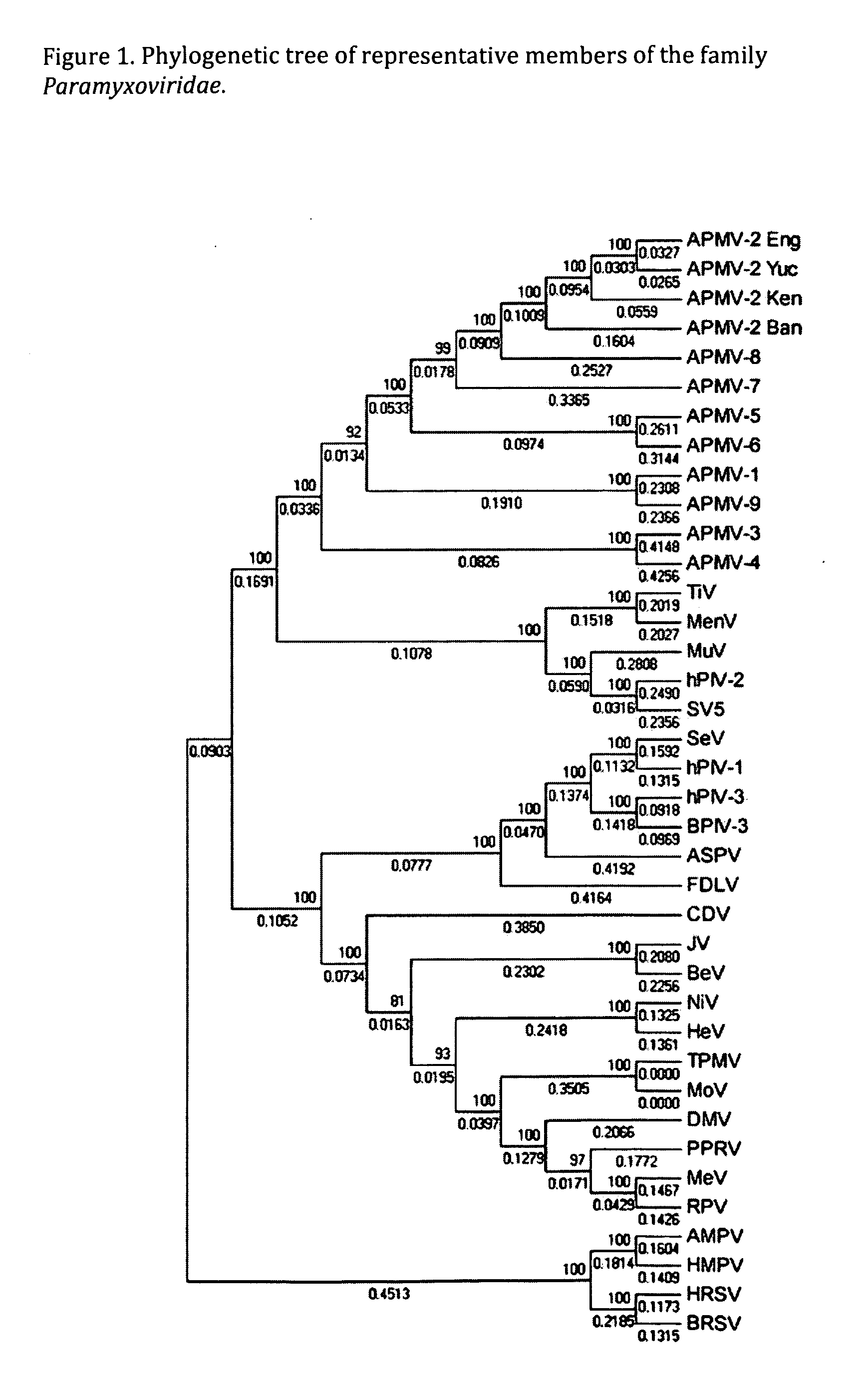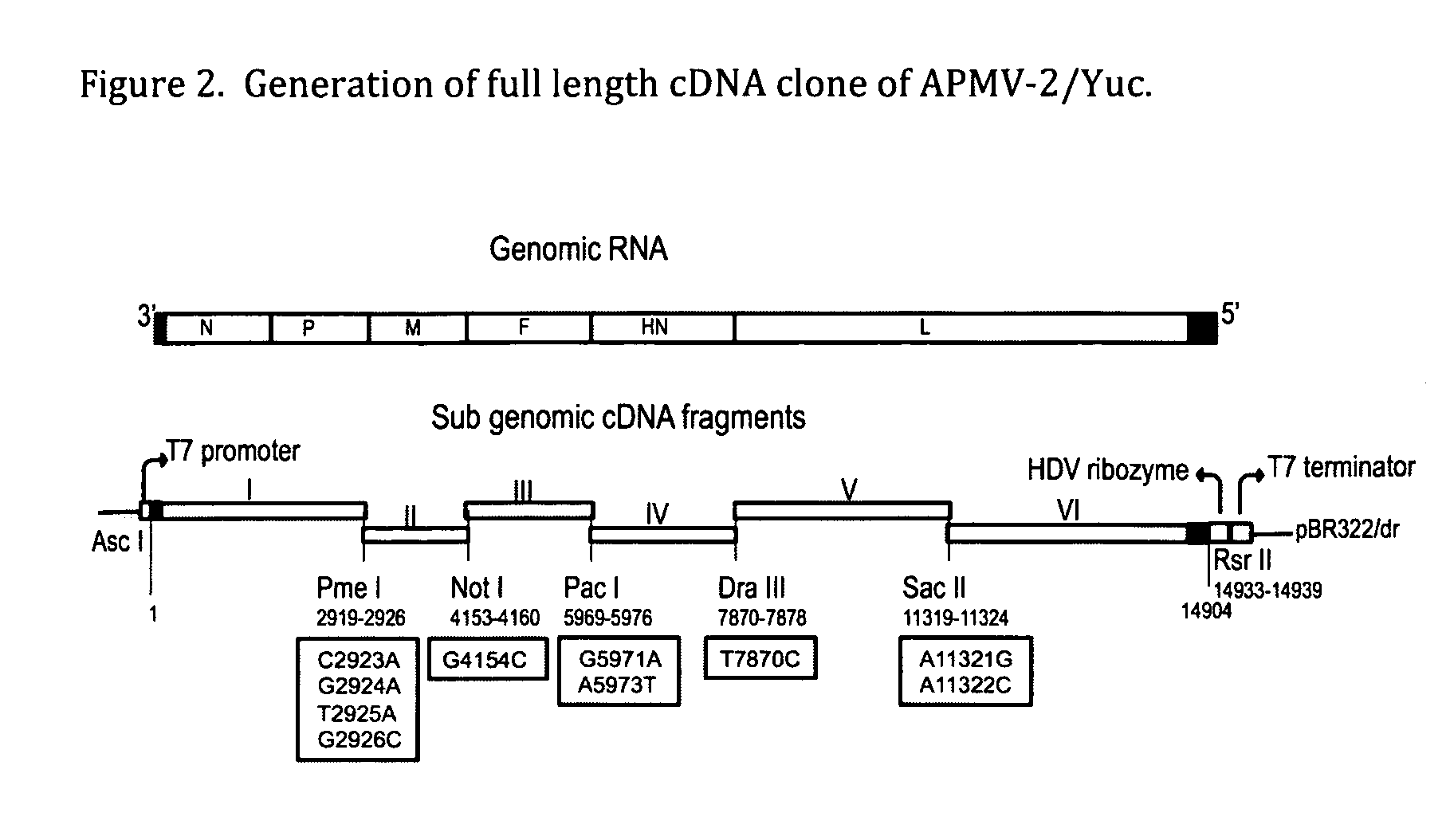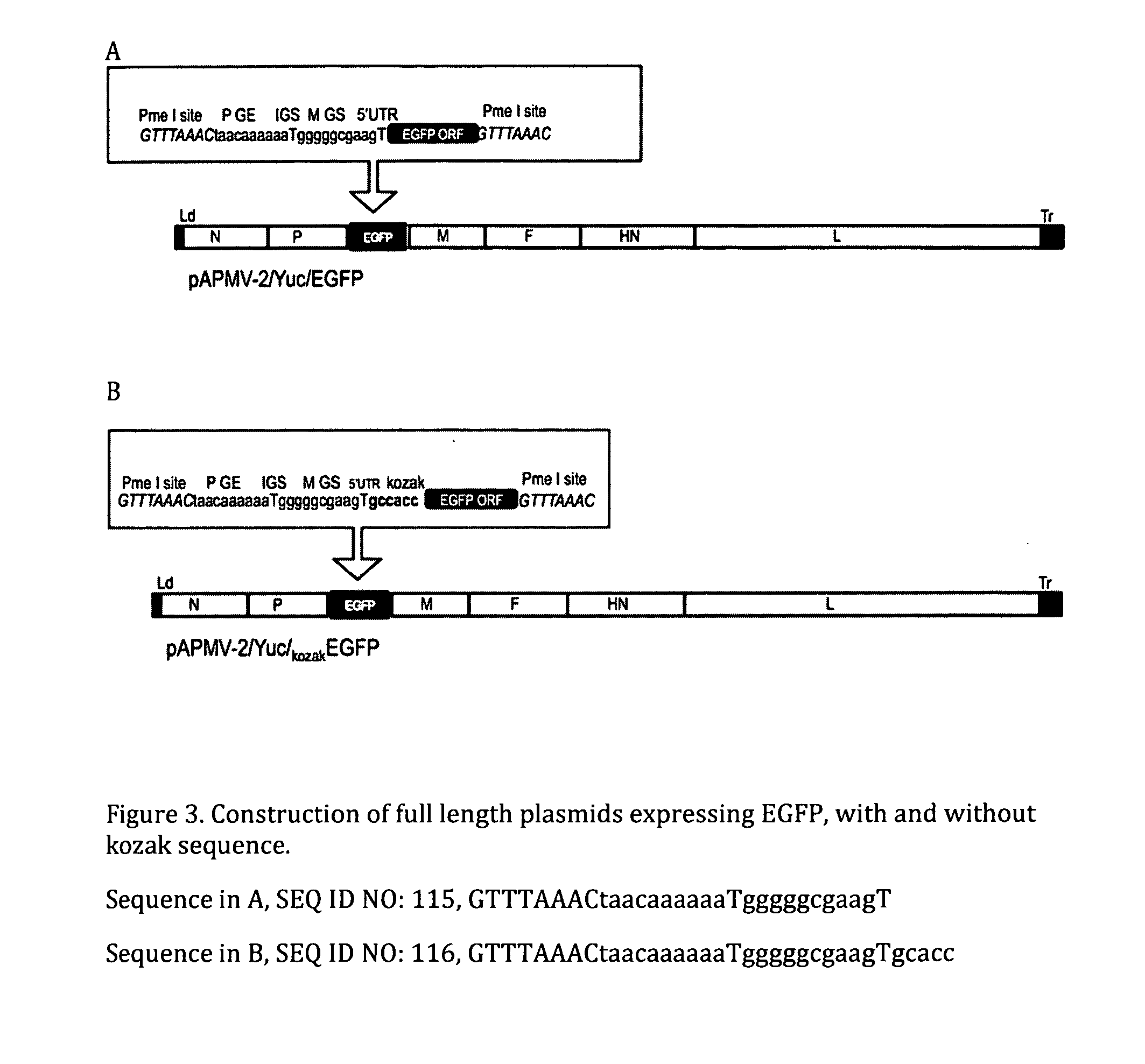Genomic sequence of avian paramyxovirus type 2 and uses thereof
a technology of avian paramyxovirus and gene sequence, which is applied in the field of gene sequence of avian paramyxovirus type 2 and its use, can solve problems such as difficulties, and achieve the effect of reducing the extent of cancer and improving symptoms
- Summary
- Abstract
- Description
- Claims
- Application Information
AI Technical Summary
Benefits of technology
Problems solved by technology
Method used
Image
Examples
example 1
Growth Characteristics of APMV-2 Strain Yucaipa
[0197]APMV-2 strain Yucaipa yielded a titer of 210 to 212 HA units in 9-day-old embryonated SPF chicken eggs 4 days post-inoculation. Nine different cell culture systems each representing a different species of origin were evaluated to determine the cell type(s) that can support the growth of APMV-2 to high titers as well as whether or not added protease is required for replication. Each of the nine cell types supported the growth of APMV-2, as determined by the observable CPE and HA activity of the infected cell culture supernatant. The HA titers were the same with and without 10% allantoic fluid supplementation of the media, and varied from 23 to 29 HA units among the cell types. The peak HA titers of the different cell lines tested in HA units were BHK21: 29, BT: 24, DF1: 28, Hep2: 26, MDCK: 24, PK15: 25, QT35: 27, RK13: 24, and Vero: 26. The virus grew most efficiently in BHK21, QT35 and DF1 cell lines, representing hamsters, quail,...
example 2
Determination of Complete Genome Sequence of AMPV-2 Strain Yucaipa
[0198]The genome of APMV-2 strain Yucaipa consists of 14,904 nt (SEQ ID NO: 1, GenBank accession no. EU338414) and thus is the smallest among the members of subfamily Paramyxovirinae reported to date (Wang et al., 2007, Curr. Genomics 4, 263-273). The genome length is a multiple of six, conforming to the “rule of six” common to members of subfamily Paramyxovirinae (Calain and Roux, 1993, J. Virol. 67, 4822-4830; Samal and Collins, 1996, J. Virol. 70, 5075-5082). The genome organization of Yucaipa virus is 3′-N-P / V-M-F-HN-L-5′, resembling that of NDV. The percentage of the genome that encodes protein is 92.37%, the same as the average coding percentage (92%) of other members of subfamily Paramyxovirinae (Miller et al., 2003, Virology 317, 330-344). The length, position, and characteristics of the six genes and their intergenic sequences (IGS) are summarized in Table 1a and described in detail below. The 3′ leader seque...
example 3
Sequences of Transcription Gene-Start, Gene-End, and Intergenic Sequences
[0199]The conserved gene-start sequence of APMV-2 strain Yucaipa is 3′-C5GCUG(U)U(C / A) while the conserved gene-end sequence is 3′-A(U)AAUUC(G)U6 (data not shown). Thus, the first nucleotide of the mRNAs of APMV-2 strain Yucaipa (the gene-start signal) is 5′-G (mRNA-sense) compared to A, for most of the other members of Paramyxovirinae mRNA have an A residue (data not shown), which also is the nucleotide assignment at the 5′ end of the genome and antigenome. Three other viruses in Paramyxovirinae that have G residue at the 5′ end of their mRNAs are Menangle, Tioman and APMV-6 (Wang et al., 2003, Curr. Genomics 4, 263-273). The APMV-2 strain Yucaipa IGS vary in length between 3 and 23 nt (data not shown), whereas the IGS of other members of Paramyxovirinae are up to 45 nt in length (Wang et al., 2003, supra), and they all end with an A residue (data not shown), as observed in many paramyxoviruses (Collins et al....
PUM
| Property | Measurement | Unit |
|---|---|---|
| Tm | aaaaa | aaaaa |
| melting temperature | aaaaa | aaaaa |
| volumes | aaaaa | aaaaa |
Abstract
Description
Claims
Application Information
 Login to View More
Login to View More - R&D
- Intellectual Property
- Life Sciences
- Materials
- Tech Scout
- Unparalleled Data Quality
- Higher Quality Content
- 60% Fewer Hallucinations
Browse by: Latest US Patents, China's latest patents, Technical Efficacy Thesaurus, Application Domain, Technology Topic, Popular Technical Reports.
© 2025 PatSnap. All rights reserved.Legal|Privacy policy|Modern Slavery Act Transparency Statement|Sitemap|About US| Contact US: help@patsnap.com



